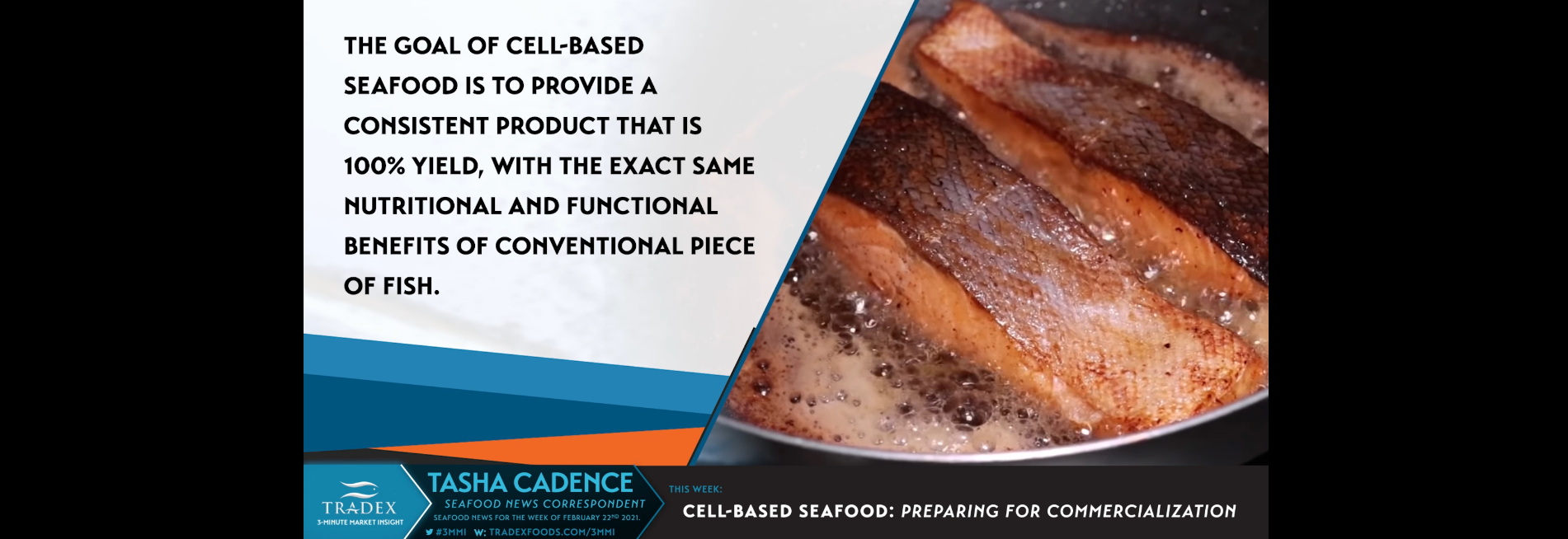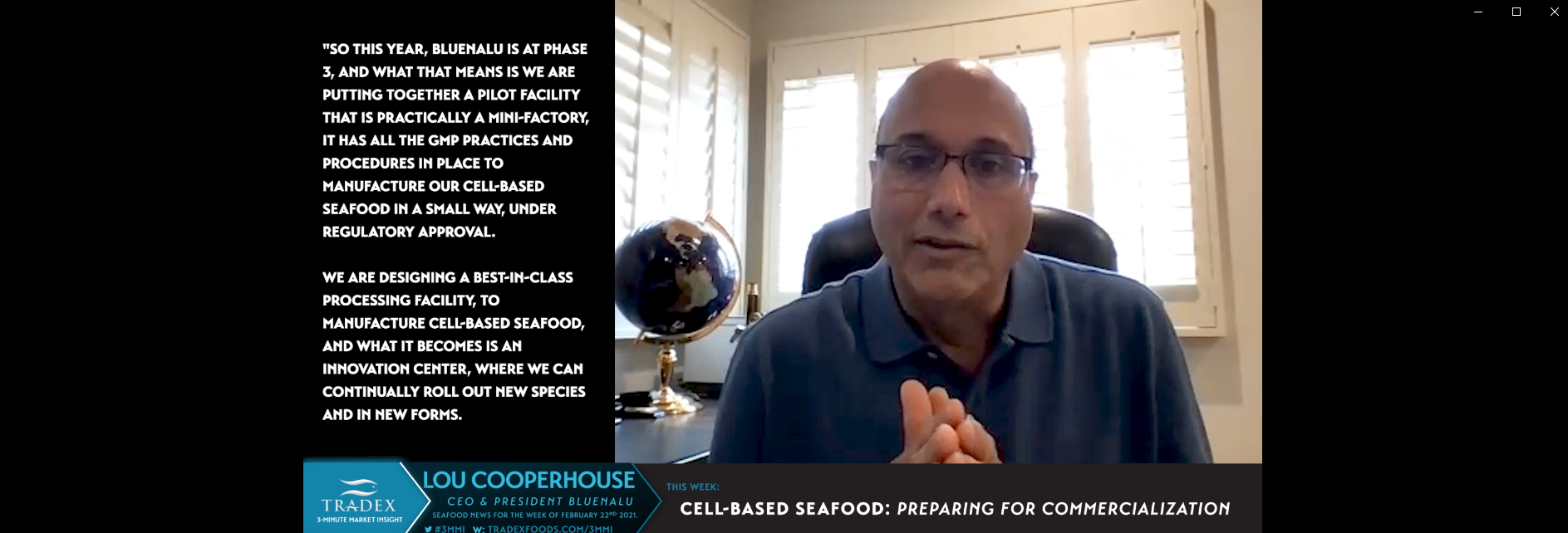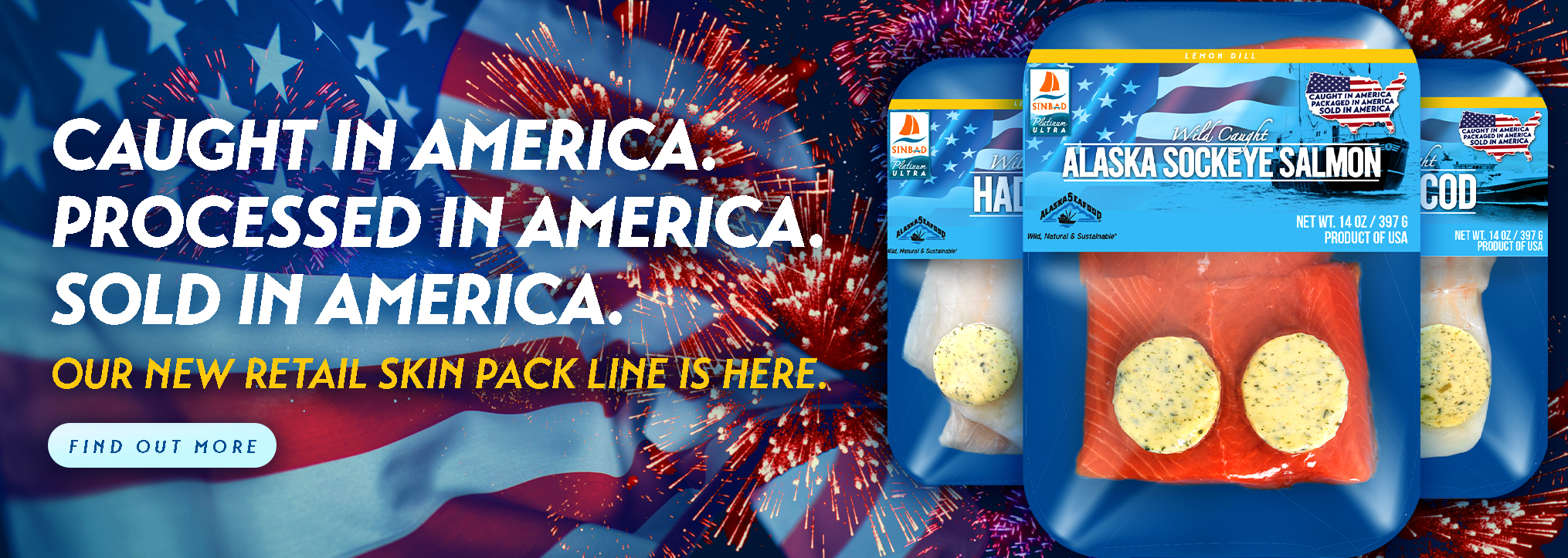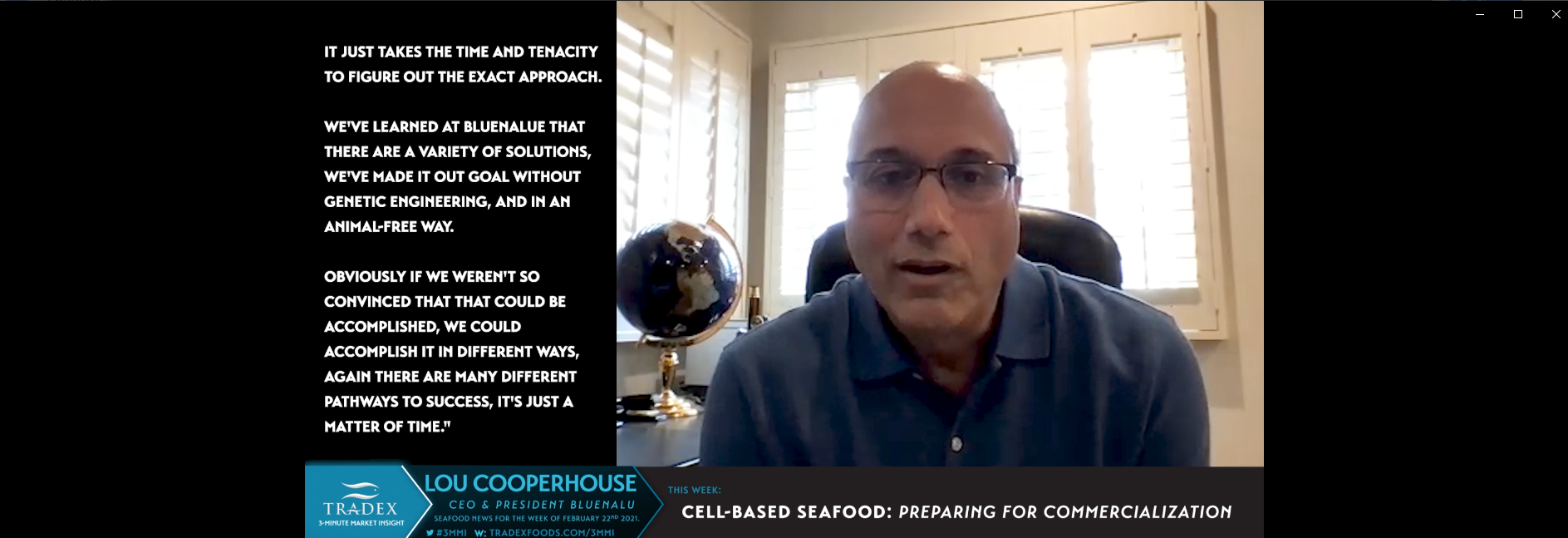
Loading
EP 526 | AIRED 02/22/2021
Cell-Based Seafood : Preparing for Commercialization
February 22nd, 2021 --- This week we give you the latest on the cell-based seafood industry, as it enters the next stage of commercialization.
--- Technological advancements towards sustainable agriculture practices in the meat industry aren't slowing down any time soon.
At this moment the most successful products are built entirely from fillet cells, mainly muscle tissue, creating a value-added product that cooks and tastes exactly like a traditional fillet.
The goal of cell-based seafood is to provide a consistent product that is 100% yield, with the exact same nutritional and functional benefits of conventional piece of fish.
In our last cell-based seafood update, we were fortunate enough to check in with Lou Cooperhouse, President and CEO of BlueNalu, who sees cell-based seafood as a vital third addition to the seafood supply chain, alongside wild and farm-raised fish.
Since then, BlueNalu has had an extremely successful year, closing over 80 million dollars in funding – the largest financing to date in the cell-based seafood industry worldwide, and is at the forefront of producing cell-based seafood at a global scale.
BlueNalu is currently working on a Mahi Mahi fillet, where they see an opportunity for improvement, as Mahi Mahi is a difficult fish to commercially produce.
Lou gave us an update on the current state of production, by means of their “5-phase Commercialization Plan” and it's looking like we could see cell-based fillets on the market, sooner than we thought.

--- "So this year, BlueNalu is at Phase 3, and what that means is we are putting together a pilot facility that is essentially a mini-factory, it has all the GMP practices and procedures in place to manufacture our cell-based seafood in a small way, under regulatory approval.
We are designing a best-in-class processing facility, to manufacture cell-based seafood, and what it becomes is an innovation center, where we can continually roll out new species and in new forms.
Like Mahi Mahi, then Bluefin Tuna, as a cube, as a fillet, as a strip, then get market feedback.
So if we were to talk again this time next year, we would have product in commerce.
It is our objective to have product in the test market for early 2022, if not sooner, in restaurants around the country.
In terms of large-scale production, its really at best 2024 or 2025 when we see the first large-scale factory coming into commerce.
That's our goal is our “Phase 5 facility” to break ground in 2023/2024 and then launch that 12-18 months later." - Lou Cooperhouse, BlueNalu

One of the bigger differences between cell-based and traditional seafood is the lack of environmental contamination such as mercury, or micro plastics making it a significantly cleaner protein for all consumers.
Lou also explains that cell-based seafood in a fresh state will have a longer shelf life due to the lack of contaminants, with a next to zero plate count, or bacteria count, however their initial product will be stored frozen.
--- We also spoke to Lou in regards to the academic skepticism towards this brand new science.
The quote in question, from UC Berkeley’s Alt. Meat Lab's Ricardo San Martin stating that when 'the process is scaled up in bioreactors, the crowded cells overheat and die."

Advertise Here: advertising@tradexfoods.com
--- "That particular professor is not correct.
This is a brand new field with brand new technology, there's more than one way to accomplish this feat.I think what we've identified at BlueNalue, there was basically a blank piece of paper, nobody had the knowledge of propagating fish cells, the science was all on mammalian cells.
So there’s an awful lot of techniques, and fish cells like in the wild, grow in colder temperatures, mammalian cells grow in higher temperatures, so that could be a correct statement for a different kind of species, or finished product applications.
But obviously everything is distinctive and we're all figuring this out together, but there’s clearly no barriers to getting this accomplished.
It just takes the time and tenacity to figure out the exact approach.
We've learned at BlueNalue that there are a variety of solutions, we've made it out goal without genetic engineering, and in an animal-free way.
Obviously if we weren't so convinced that that could be accomplished, we could accomplish it in different ways, again there are many different pathways to success, it's just a matter of time."

---- With the unforeseen events of this past year, it is clear that our goal should be to secure our food supply chain as much as possible.
While BlueNalu certainly faced their respective challenges with supplies and a staggered workforce, they have managed to pull through on schedule.
We will be sure to keep an eye on cell-based seafood as we make the shift towards a more sustainable seafood industry.
--- If you are not already, be sure to subscribe to our 3-Minute Market Insight using the signup form below to keep tuned-in to all upcoming market insights.


